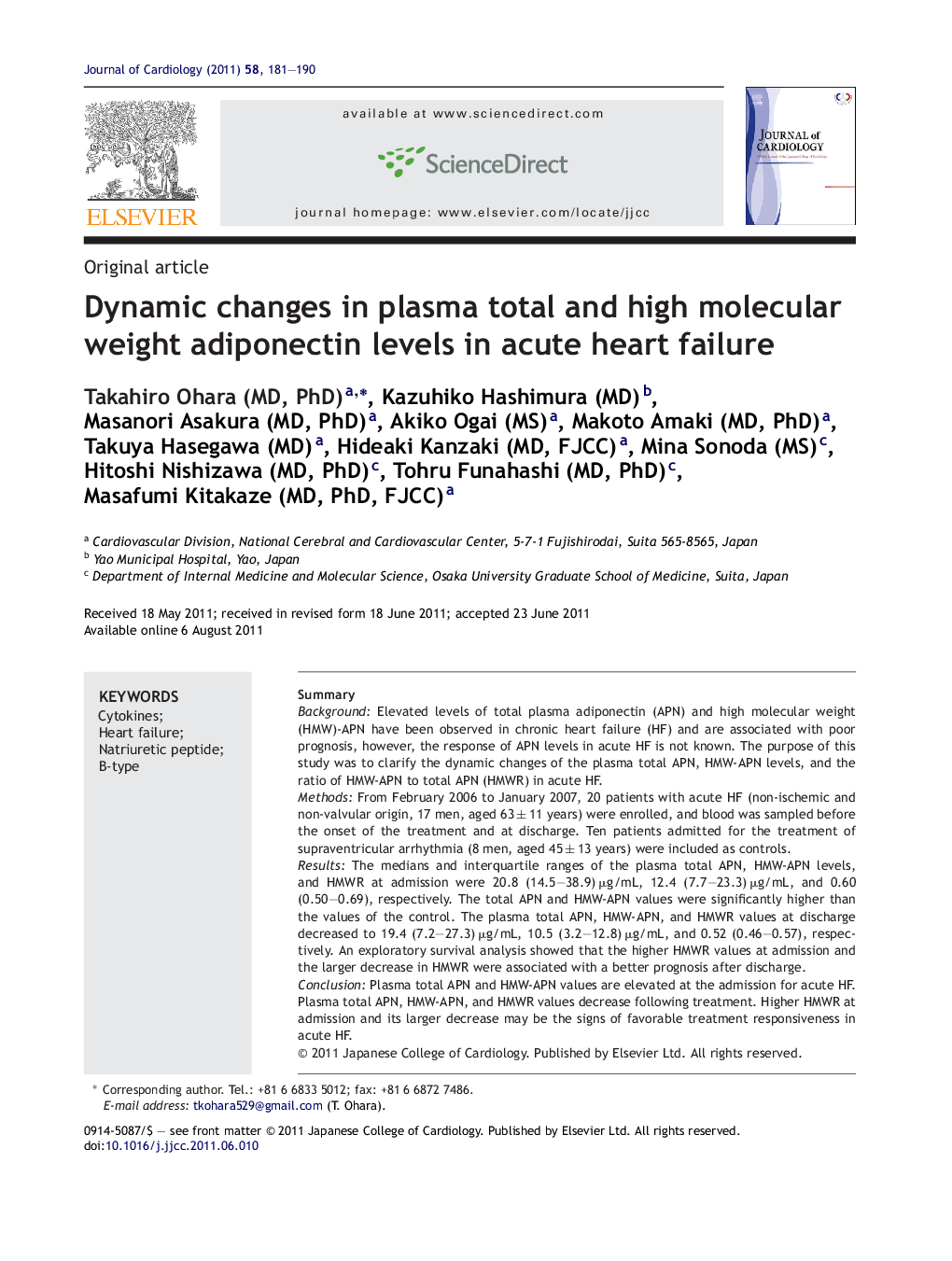| Article ID | Journal | Published Year | Pages | File Type |
|---|---|---|---|---|
| 2963364 | Journal of Cardiology | 2011 | 10 Pages |
SummaryBackgroundElevated levels of total plasma adiponectin (APN) and high molecular weight (HMW)-APN have been observed in chronic heart failure (HF) and are associated with poor prognosis, however, the response of APN levels in acute HF is not known. The purpose of this study was to clarify the dynamic changes of the plasma total APN, HMW-APN levels, and the ratio of HMW-APN to total APN (HMWR) in acute HF.MethodsFrom February 2006 to January 2007, 20 patients with acute HF (non-ischemic and non-valvular origin, 17 men, aged 63 ± 11 years) were enrolled, and blood was sampled before the onset of the treatment and at discharge. Ten patients admitted for the treatment of supraventricular arrhythmia (8 men, aged 45 ± 13 years) were included as controls.ResultsThe medians and interquartile ranges of the plasma total APN, HMW-APN levels, and HMWR at admission were 20.8 (14.5–38.9) μg/mL, 12.4 (7.7–23.3) μg/mL, and 0.60 (0.50–0.69), respectively. The total APN and HMW-APN values were significantly higher than the values of the control. The plasma total APN, HMW-APN, and HMWR values at discharge decreased to 19.4 (7.2–27.3) μg/mL, 10.5 (3.2–12.8) μg/mL, and 0.52 (0.46–0.57), respectively. An exploratory survival analysis showed that the higher HMWR values at admission and the larger decrease in HMWR were associated with a better prognosis after discharge.ConclusionPlasma total APN and HMW-APN values are elevated at the admission for acute HF. Plasma total APN, HMW-APN, and HMWR values decrease following treatment. Higher HMWR at admission and its larger decrease may be the signs of favorable treatment responsiveness in acute HF.
